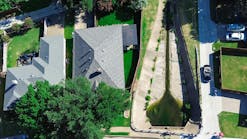The Year in Review & a Look Ahead: NMSA Perspective
Here at the National Municipal Stormwater Alliance (NMSA), we are always keeping an eye on the macro-view of trends, policies and actions impacting the MS4 sector. Here is a summary of what we feel were important items of note from the past year as well as thoughts on what we see happening in 2023.
Looking Back at 2022
What's in Store in 2023?
Seth Brown
Seth Brown has over 25 years of experience in the water sector and is the Principal and Founder of Storm and Stream Solutions, LLC, a consulting firm providing a range of services from policy and alternative project delivery analysis in the stormwater sector to facilitation and training services focused on stormwater topics. He was the Director of Stormwater Programs at the Water Environment Federation from 2010-2015 and is currently the Executive Director of the National Municipal Stormwater Alliance, which is a 501.c.3 representing stormwater-focused organizations in 24 states across 9 of the 10 U.S. EPA regions with a network that is comprised of over 4,000 MS4s.
Seth has a Ph.D. in civil engineering from George Mason University with a research focus on socio-economic modeling of incentive-based investments of green stormwater infrastructure on private properties. He leads courses in Green Infrastructure and Innovative Water Partnerships at Virginia Tech and the University of Maryland at Eastern Shore and is a licensed professional engineer in the state of Maryland.







